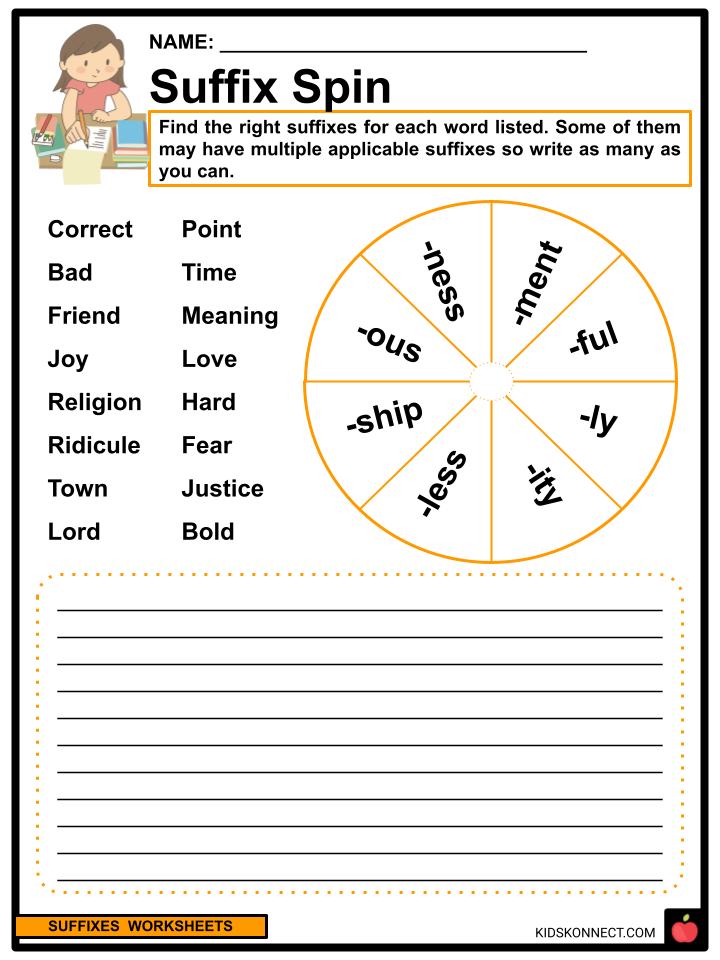
Unlocking Linguistic Potential: The Transformative Power of Suffixes Worksheets
Language is a complex, living entity, constantly evolving and offering endless possibilities for expression. At its core, however, lie fundamental building blocks that, when mastered, unlock incredible linguistic potential. Among these, prefixes and suffixes stand out as powerful morphemes – small units of meaning that, when added to a root word, can dramatically alter its meaning, grammatical function, or both. While prefixes precede a root word, suffixes follow it, acting as crucial indicators of a word’s role in a sentence and contributing significantly to vocabulary expansion. For educators, parents, and self-learners alike, the systematic study of these word parts is non-negotiable, and one of the most effective tools in this endeavor is the well-crafted suffixes worksheet.
The journey to linguistic proficiency is multifaceted, encompassing phonics, vocabulary, grammar, reading comprehension, and writing skills. Suffixes bridge many of these areas, offering a streamlined path to understanding how words are constructed and how they function. A firm grasp of common suffixes empowers learners to decode unfamiliar words, deduce their meanings, and employ them accurately in their own communication. This article will delve into the profound impact of suffixes, explore the myriad benefits of incorporating suffixes worksheets into learning curricula, and provide insights into designing and utilizing these invaluable resources to foster deeper linguistic understanding.
The Foundational Role of Suffixes in Language Development
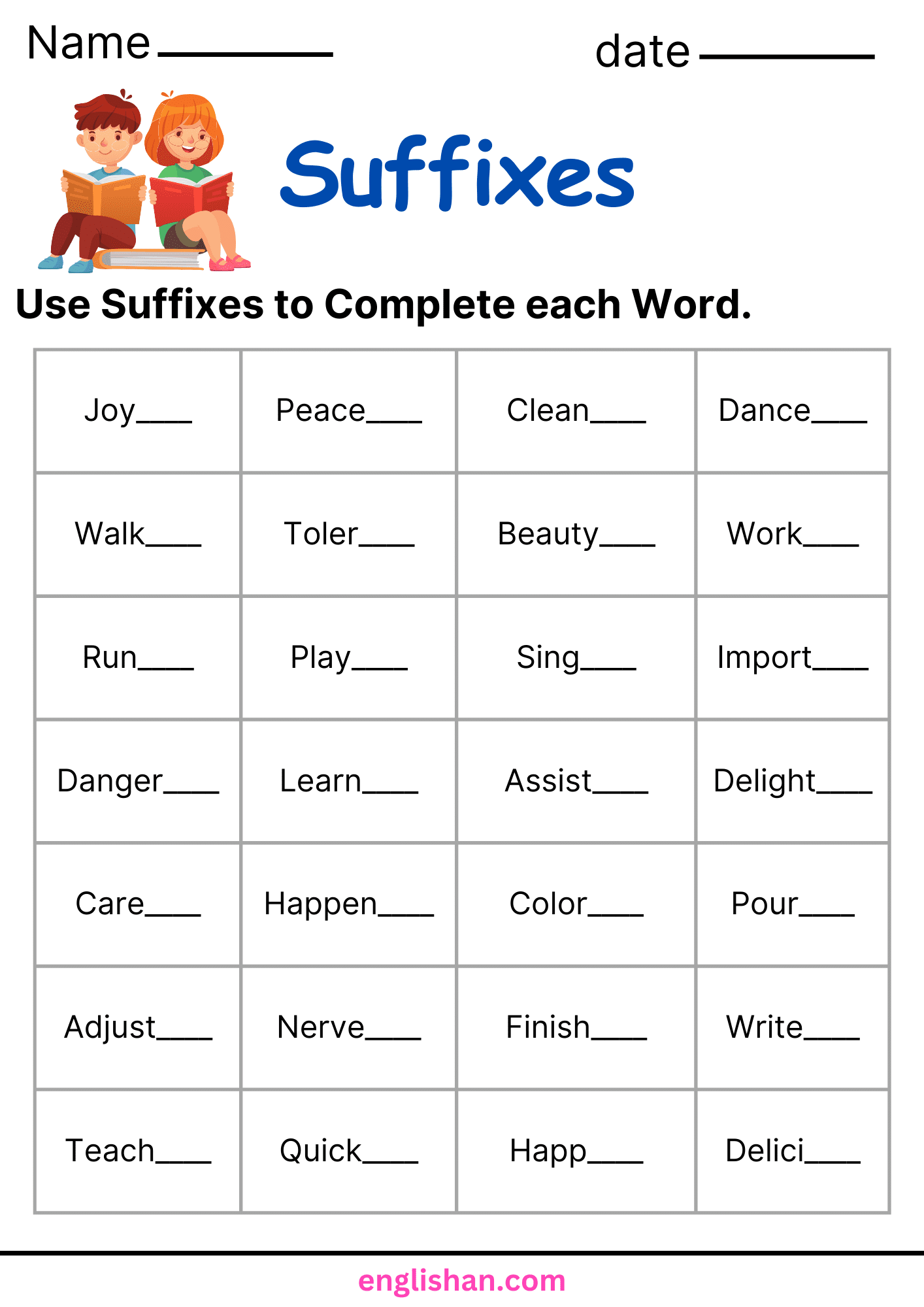
Suffixes are not mere additions; they are transformative agents. Consider the root word "happy." Add the suffix "-ness," and it becomes "happiness," changing from an adjective describing a state to a noun representing the state itself. Add "-ly," and it becomes "happily," transforming into an adverb describing how an action is performed. These subtle changes, driven by suffixes, are fundamental to constructing grammatically correct and semantically precise sentences.

For students, particularly those in elementary and middle school, and also for English as a Second Language (ESL) or English as a Foreign Language (EFL) learners, understanding suffixes offers a significant advantage. It allows them to:
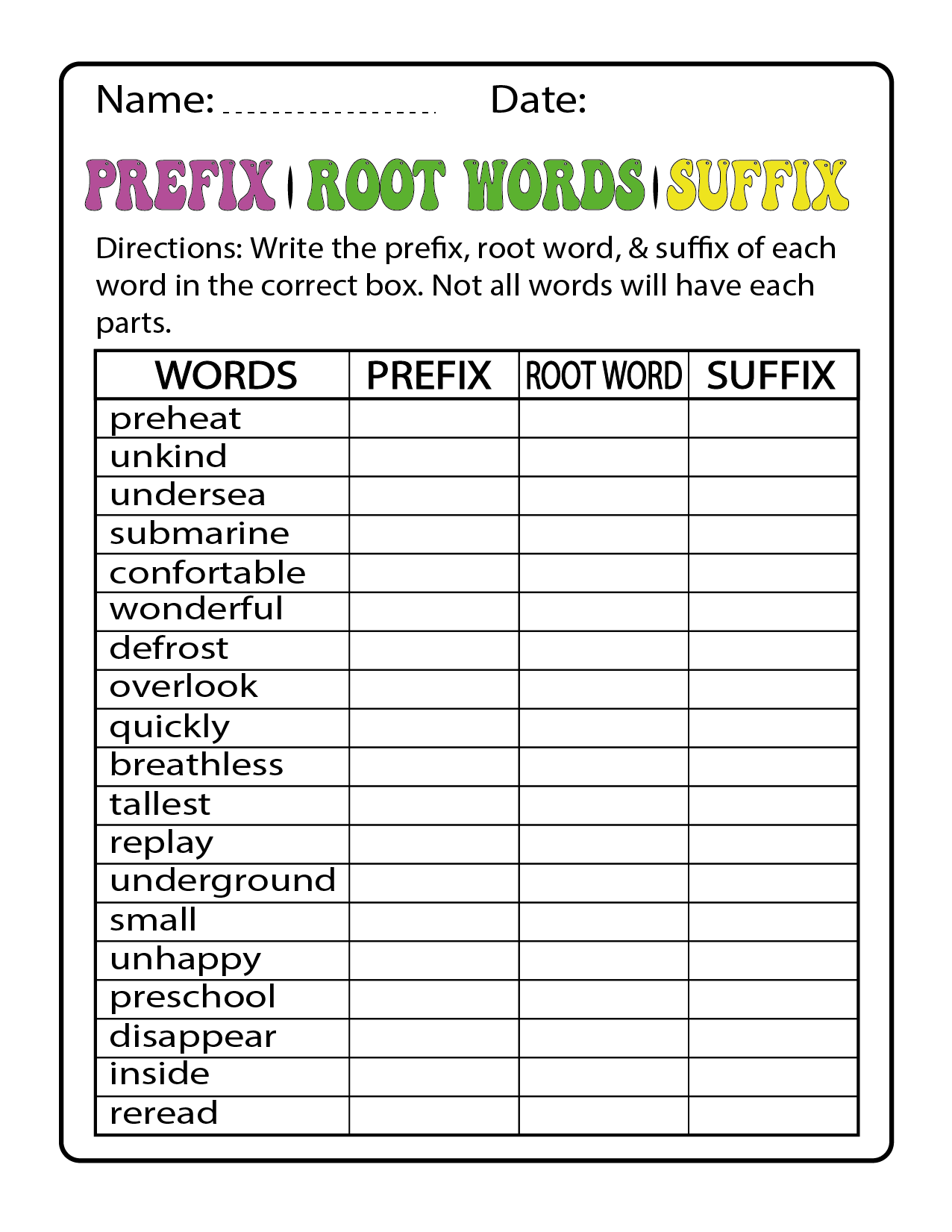
- Expand Vocabulary Exponentially: Instead of memorizing individual words, learners can understand word families. Knowing "-tion" often forms nouns (e.g., "action," "creation," "information") instantly unlocks a vast array of related terms.
- Improve Reading Comprehension: When encountering an unknown word in text, recognizing a familiar suffix can provide clues about its part of speech or general meaning, aiding in contextual understanding.
- Enhance Writing Fluency and Accuracy: A strong command of suffixes enables learners to choose the most appropriate word form for their intended meaning, leading to more sophisticated and grammatically sound writing. For instance, knowing when to use "develop" (verb), "development" (noun), or "developmental" (adjective) is crucial for precise expression.
- Strengthen Grammatical Understanding: Suffixes often signal a word’s grammatical category (noun, adjective, verb, adverb), reinforcing concepts of parts of speech.

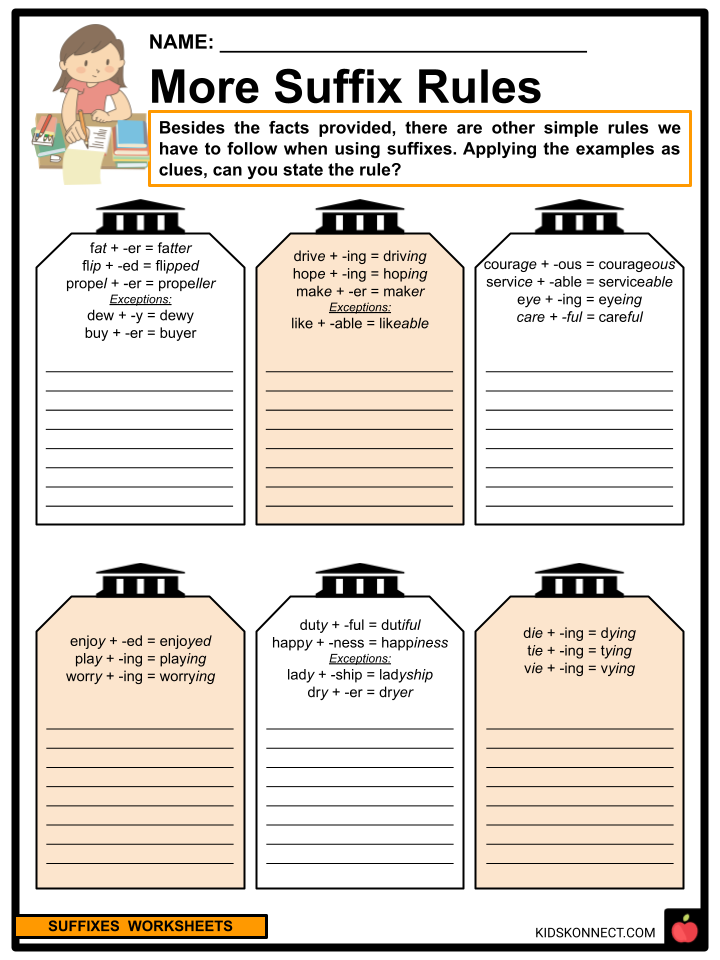
Without a solid foundation in suffixes, learners often struggle with vocabulary acquisition, leading to slower reading speeds, decreased comprehension, and less confident writing. This is precisely where targeted, engaging suffixes worksheets become indispensable.

Why Suffixes Worksheets Are Indispensable Learning Tools
In an educational landscape increasingly dominated by digital resources, the traditional worksheet might sometimes be overlooked. However, for teaching suffixes, its value remains unparalleled. Suffixes worksheets offer a structured, tangible, and repetitive learning experience that is crucial for mastering these intricate word parts.

Here’s why they are so effective:
- Structured Practice: Worksheets provide a clear, step-by-step approach to learning. They can isolate specific suffixes or types of suffixes, allowing learners to focus their attention without distraction.
- Reinforcement and Repetition: Mastery comes through practice. Worksheets offer ample opportunities for repeated exposure to suffixes in various contexts, solidifying understanding and recall.
- Independent Learning: Once introduced to a concept, students can often work through worksheets independently, fostering self-reliance and allowing educators to provide individualized support where needed.
- Assessment and Feedback: Worksheets serve as quick formative assessment tools, allowing teachers to gauge student understanding and identify areas that require further instruction. For learners, immediate feedback (especially with answer keys) reinforces correct answers and helps correct misconceptions.
- Tangible Progress: Completing a worksheet provides a sense of accomplishment and visible evidence of learning, which can be highly motivating for students.
- Versatility: Worksheets can be adapted for various learning styles and levels, from simple matching exercises for beginners to complex sentence construction for advanced learners.
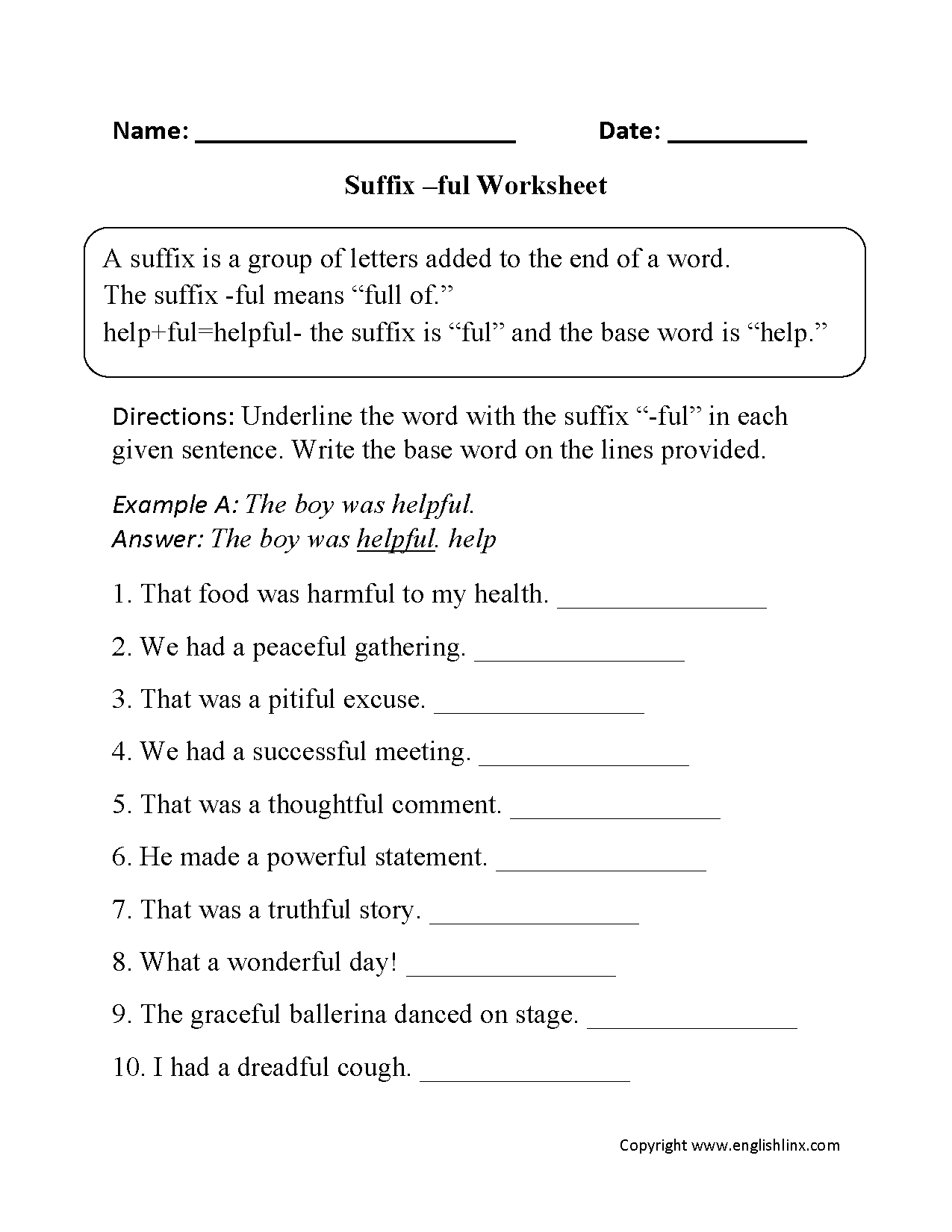
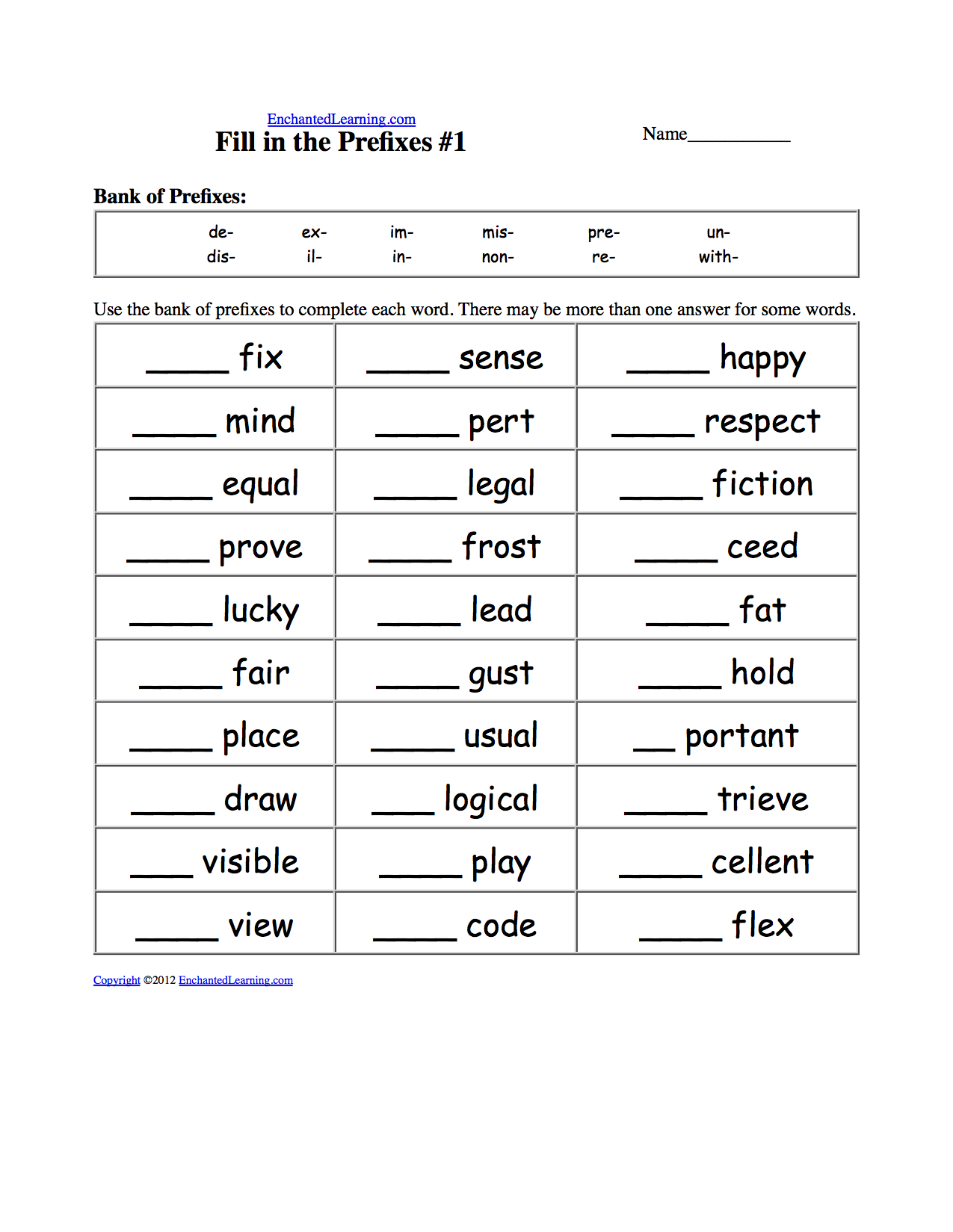
The physical act of writing, circling, and connecting words on a suffixes worksheet also engages kinesthetic learning pathways, aiding memory retention. They offer a quiet, focused environment for deep processing of linguistic concepts.
Designing and Implementing Effective Suffixes Worksheets
Not all worksheets are created equal. An effective suffixes worksheet is thoughtfully designed to maximize engagement and learning outcomes. When creating or selecting these resources, consider the following elements:
-
Variety of Activities: Avoid monotony. A good worksheet set will include:
- Matching: Matching suffixes to their meanings or to root words.
- Word Transformation: Given a root word, learners add a specific suffix to change its part of speech (e.g., "read" + "-able" = "readable").
- Fill-in-the-Blank: Sentences with missing words where learners must choose the correct suffix to complete the word.
- Sentence Creation: Learners use words formed with specific suffixes in original sentences.
- Identifying Suffixes: Underlining or circling suffixes in a given passage.
- Contextual Clues: Worksheets that require learners to use context to determine the meaning of a word with a suffix.
- Categorization: Grouping words by their suffixes or by the part of speech they form.
-
Gradual Complexity: Start with common, high-frequency suffixes and gradually introduce more complex or less common ones. Begin with simple recognition tasks and progress to application and creation.
-
Clear Instructions and Examples: Each section should have explicit instructions and a clear example to guide learners. Ambiguity can lead to frustration and hinder learning.
-
Relevant and Engaging Content: Use vocabulary that is appropriate for the learners’ age and interests. Incorporate themes that resonate with them. Real-world examples make the learning more meaningful.
-
Visual Appeal: While content is king, a visually appealing layout with clear fonts, adequate white space, and perhaps some relevant graphics can significantly enhance engagement, especially for younger learners.
-
Answer Keys: For self-correction and independent learning, providing an answer key is invaluable. It allows learners to check their work immediately and understand where they went wrong.
Implementation Strategies:
- Pre-teaching: Before distributing a worksheet, introduce the target suffix(es) through direct instruction, examples, and discussion.
- Guided Practice: Work through the first few problems together as a class or in small groups.
- Independent Practice: Allow students to complete the remainder of the worksheet independently.
- Review and Discussion: After completion, review answers, clarify misconceptions, and encourage students to explain their reasoning.
- Differentiation: Provide simpler worksheets for struggling learners or those new to suffixes, and more challenging ones (e.g., multi-step transformations, open-ended writing tasks) for advanced learners.
Common Suffixes to Master Through Worksheets
While there are many suffixes, focusing on the most common and productive ones yields the greatest benefit. Here are key categories that should be covered in suffixes worksheets:
-
Noun-Forming Suffixes:
- -tion, -sion: (action, creation, explosion, tension) – often indicates a state, process, or result.
- -ment: (development, enjoyment, argument) – indicates an action, result, or state.
- -ness: (happiness, kindness, softness) – indicates a state or quality.
- -ity, -ty: (ability, creativity, loyalty) – indicates a state or quality.
- -er, -or: (teacher, doctor, baker, actor) – indicates a person who performs an action.
- -ism: (socialism, criticism) – indicates a doctrine, belief, or characteristic.
- -ist: (artist, biologist) – indicates a person who practices something.
-
Adjective-Forming Suffixes:
- -ful: (beautiful, helpful, careful) – indicates full of, characterized by.
- -less: (careless, hopeless, fearless) – indicates without.
- -able, -ible: (readable, enjoyable, visible, incredible) – indicates capable of, susceptible to.
- -ous, -ious: (famous, courageous, victorious) – indicates full of, possessing.
- -y: (sunny, sleepy, cloudy) – indicates characterized by.
- -al, -ial: (musical, natural, artificial) – indicates relating to.
- -ic, -ical: (athletic, tragic, logical) – indicates relating to.
-
Verb-Forming Suffixes:
- -ify: (simplify, clarify, terrify) – indicates to make or cause to become.
- -ize, -ise: (realize, standardize, organize) – indicates to make, cause to be, or become.
- -en: (harden, strengthen, widen) – indicates to make or become.
-
Adverb-Forming Suffixes:
- -ly: (quickly, happily, carefully) – indicates in a certain way (most common adverb suffix).
By systematically addressing these categories through varied exercises, suffixes worksheets provide a comprehensive framework for mastering a crucial aspect of English morphology.
Beyond Vocabulary: The Broader Benefits of Suffixes Worksheets
The impact of well-implemented suffixes worksheets extends far beyond mere vocabulary acquisition. They contribute to a holistic development of literacy skills:
- Enhanced Reading Comprehension: When students can quickly recognize suffixes, they spend less cognitive energy on decoding individual words and more on understanding the overall meaning of a text. This fluency is vital for deeper comprehension.
- Improved Writing Proficiency: Knowing how suffixes change parts of speech allows writers to select words with greater precision, leading to more nuanced and sophisticated expression. It helps avoid common grammatical errors related to word form.
- Critical Thinking Skills: Deductive reasoning is engaged when students analyze a word with a suffix and infer its meaning based on the root word and suffix. This builds valuable critical thinking habits.
- Support for English Language Learners (ELLs): For non-native speakers, suffixes provide a systematic way to understand English word formation, often mirroring similar concepts in their native languages or offering a clear structural pattern where one might not exist. This greatly aids in both comprehension and production of English.
- Preparation for Standardized Tests: Many standardized tests, including SAT, ACT, and various English proficiency exams, include questions that assess vocabulary and word analysis skills, making suffix knowledge directly applicable.
Best Practices for Maximizing the Impact of Suffixes Worksheets
To truly leverage the power of suffixes worksheets, educators and learners should adhere to certain best practices:
- Integrate with Authentic Texts: Don’t let suffix learning exist in isolation. Encourage students to identify and analyze words with suffixes in their reading materials (novels, articles, essays). This shows the practical application of their learning.
- Encourage Discussion: After completing worksheets, facilitate discussions about the meanings of words, how suffixes change them, and why certain forms are used in particular contexts.
- Connect to Writing: Challenge students to consciously incorporate words with specific suffixes into their own writing assignments. Provide feedback on their usage.
- Gamify Learning: Turn suffix practice into games or competitions. Online quizzes, interactive whiteboards, or even simple classroom games can make the learning process more dynamic and enjoyable.
- Provide Timely and Constructive Feedback: Whether through self-correction with answer keys or teacher feedback, ensure learners understand their errors and how to correct them. Focus on understanding, not just getting the right answer.
- Differentiate Instruction: As mentioned, tailor the complexity and type of worksheets to meet individual student needs. Some might need more scaffolding, while others might thrive on advanced challenges.
In conclusion, suffixes are fundamental components of the English language, acting as powerful catalysts for vocabulary growth, grammatical understanding, and overall literacy development. While numerous pedagogical approaches exist, the well-designed and strategically implemented suffixes worksheet remains an exceptionally effective tool. It provides the structured practice, repetition, and immediate feedback necessary for learners to master these crucial word parts. By thoughtfully integrating suffixes worksheets into the curriculum, educators can empower students to unlock new levels of linguistic proficiency, equipping them with the skills to confidently read, write, and communicate in an ever-evolving world. Their tangible nature and focused approach make them an indispensable resource for any language learner’s toolkit.
